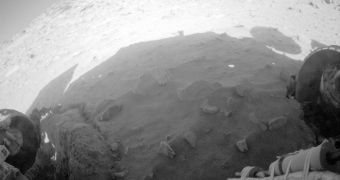Investigators say that it's high time to begin a serious search for sings of present or past life on Mars. Landers and rovers we've sent there have shown us so much of how the planet works, but now it's time to start searching for the thing we set out to find in our space explorations – life somewhere other than Earth.
Over the past few decades, only the Viking missions carried with them scientific instruments that were capable of detecting potential signs of organic life on the Red planet. But those missions were launched in 1975, and the technology of the time was nowhere as good as the one we have today.
But the search for life has never had a top priority in itself, at least not for the American space agency. At one point, decision-makers most likely decided that a certain scientific return is to be preferred to potentially fruitless searches for signs of bacterial or microbial life.
But the Viking mission played a critically important role in history, in the sense that they formed an entire school of thought about Mars, based solely on their discoveries. The planet was painted as inhospitable, subjected to extreme radiation, too cold and way too arid to sustain microbial life even in its most basic forms.
Since then, all follow-up missions that were carried out on the Red Planet, including the twin rovers Spirit and Opportunity, the Phoenix Mars Lander, and the several orbiters NASA and ESA sent to Mars, have provided evidence to support the discoveries made by the Viking probes.
But scientists are now arguing that space agencies should focus their attention on discovering so called “extant” life, which may be either active or dormant, but still alive, Space reports. This goal could be achieved in 2011-2012, when the NASA Mars Science Laboratory (MSL) rover is due to launch.
“There is no human task more significant and profound than testing if we are alone or not in the universe, and Mars must be the first place to look, as it is just facing our front yard,” explains researcher Alberto Fairen.
He holds an appointment as an astrobiologist at the SETI (Search for Extraterrestrial Intelligence) Institute, in California, as well as a position at the NASA Ames Research Center.
“Finding life on Mars would be the most important scientific achievement of this century,” he goes on to say. A lot of effort should be dedicated exclusively to determining whether some of the mysteries related to the Viking missions are in fact no mysteries at all.
Some substances that were found by the landers were qualified as contamination from Earth, but similar discoveries from Phoenix made researchers think again. With its potent instrument suite, MSL might be able to shed light on this once and for all.

 14 DAY TRIAL //
14 DAY TRIAL //